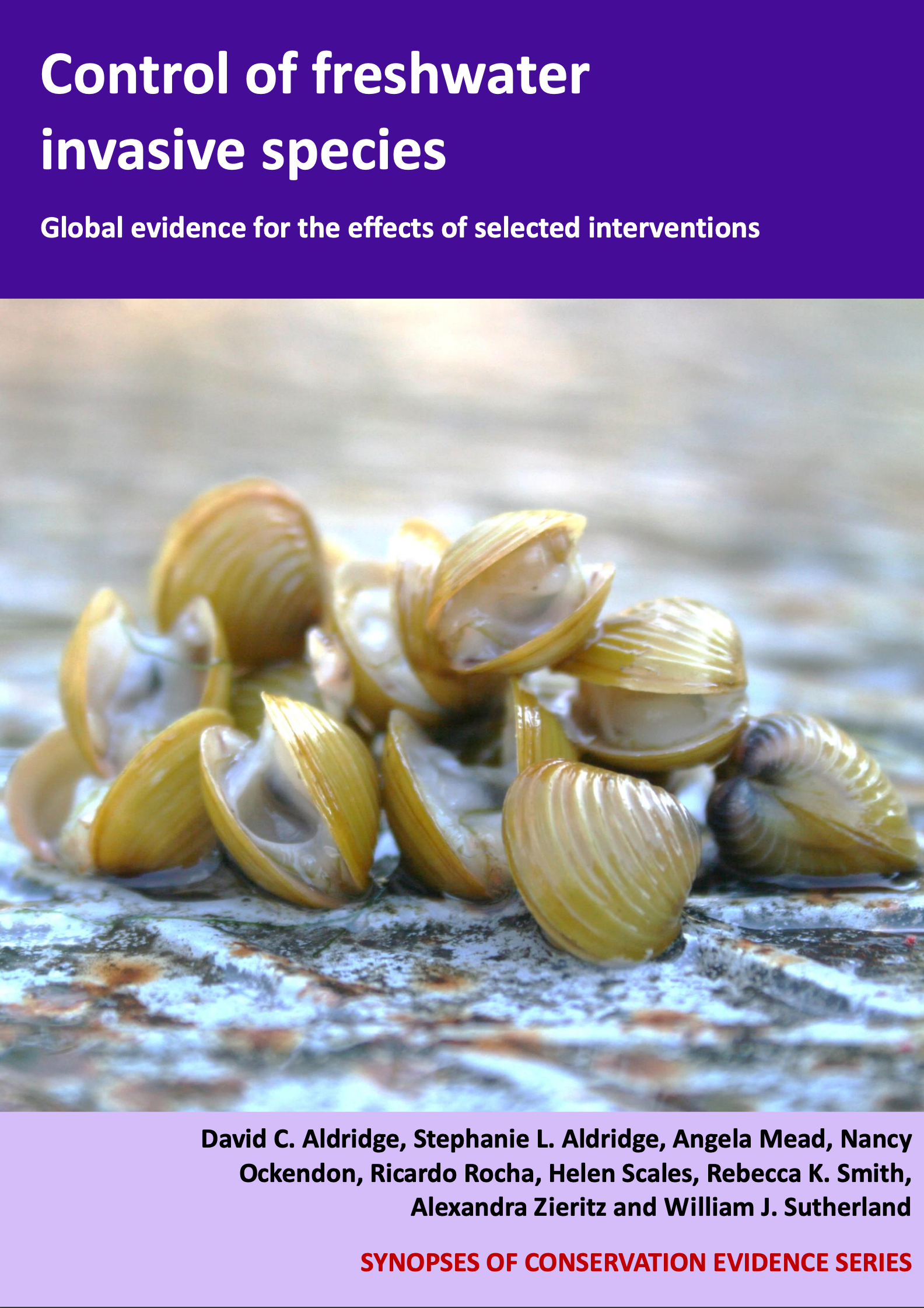Actions to conserve biodiversity
We have summarised evidence from the scientific literature about the effects of actions to conserve wildlife and ecosystems.
Review the evidence from the studies
Not sure what Actions are? Read a brief description.
Search for evidence
e.g. "frogs chytrid"
161 Actions found
Refine
Hide
161 Actions found
Download Actions
| 0 selected |
|
Order results by:
| Action | Effectiveness | Studies | Category | |
|---|---|---|---|---|
|
Procambarus crayfish control: Trapping and removal Action Link |
Likely to be beneficial | 1 |
|
|
|
Procambarus crayfish control: Encouraging predators Action Link |
Unlikely to be beneficial | 3 |
|
|
|
Procambarus crayfish control: Trapping combined with encouragement of predators Action Link |
Likely to be beneficial | 2 |
|
|
|
Procambarus crayfish control: Sterilization of males Action Link |
Likely to be beneficial | 1 |
|
|
|
Procambarus crayfish control: Removal of food source Action Link |
No evidence found (no assessment) | 0 |
|
|
|
Procambarus crayfish control: Draining the waterway Action Link |
No evidence found (no assessment) | 0 |
|
|
|
Procambarus crayfish control: Remove the crayfish by electrofishing Action Link |
No evidence found (no assessment) | 0 |
|
|
|
Procambarus crayfish control: Add chemicals to the water Action Link |
Likely to be beneficial | 1 |
|
|
|
Procambarus crayfish control: Create barriers Action Link |
Unknown effectiveness (limited evidence) | 1 |
|
|
|
Procambarus crayfish control: Relocate vulnerable crayfish Action Link |
No evidence found (no assessment) | 0 |
|
|
|
American bullfrog control: Biological control using native predators Action Link |
Likely to be beneficial | 1 |
|
|
|
American bullfrog control: Biological control of co-occurring beneficial species Action Link |
No evidence found (no assessment) | 0 |
|
|
|
American bullfrog control: Habitat modification Action Link |
No evidence found (no assessment) | 0 |
|
|
|
American bullfrog control: Draining ponds and altering the length of time for which the pond contains water Action Link |
No evidence found (no assessment) | 0 |
|
|
|
American bullfrog control: Pond destruction Action Link |
No evidence found (no assessment) | 0 |
|
|
|
American bullfrog control: Fencing Action Link |
No evidence found (no assessment) | 0 |
|
|
|
American bullfrog control: Direct removal of adults Action Link |
Likely to be beneficial | 4 |
|
|
|
American bullfrog control: Direct removal of juveniles Action Link |
Likely to be beneficial | 2 |
|
|
|
American bullfrog control: Collection of egg clutches Action Link |
No evidence found (no assessment) | 0 |
|
|
|
American bullfrog control: Application of a biocide Action Link |
Unknown effectiveness (limited evidence) | 1 |
|
|
|
American bullfrog control: Public education Action Link |
No evidence found (no assessment) | 0 |
|
|
|
Brown and black bullheads: Application of a biocide Action Link |
Beneficial | 2 |
|
|
|
Brown and black bullheads: Netting Action Link |
Likely to be beneficial | 1 |
|
|
|
Brown and black bullheads: Biological control using native predators Action Link |
No evidence found (no assessment) | 0 |
|
|
|
Red-eared terrapin: Direct removal of adults Action Link |
Likely to be beneficial | 2 |
|
Download Actions
| 0 selected |
|

Control of Freshwater Invasive Species - Published 2017
Control of Freshwater Invasive Species Synopsis
Watch this search
If you are familiar with RSS feeds, please click the button below to retrieve the feed URL:
RSS feed for this searchIf you are unfamiliar with RSS feeds, we would suggest reading this BBC article.
Unfortunately, due to the number of feeds we have available, we cannot provide e-mail updates. However, you could use tools such as Feed My Inbox to do this for you.
What are 'Individual studies' and 'Actions'?
Individual studies
An individual study is a summary of a specific scientific study, usually taken from a scientific journal, but also from other resources such as reports. It tells you the background context, the action(s) taken and their consequences.
If you want more detail please look at the original reference.
Actions
Each action page focuses on a particular action you could take to benefit wildlife or ecosystems.
It contains brief (150-200 word) descriptions of relevant studies (context, action(s) taken and their consequences) and one or more key messages.
Key messages show the extent and main conclusions of the available evidence. Using links within key messages, you can look at the paragraphs describing each study to get more detail. Each paragraph allows you to assess the quality of the evidence and how relevant it is to your situation.
Where we found no evidence, we have been unable to assess whether or not an intervention is effective or has any harmful impacts.





)_2023.JPG)














